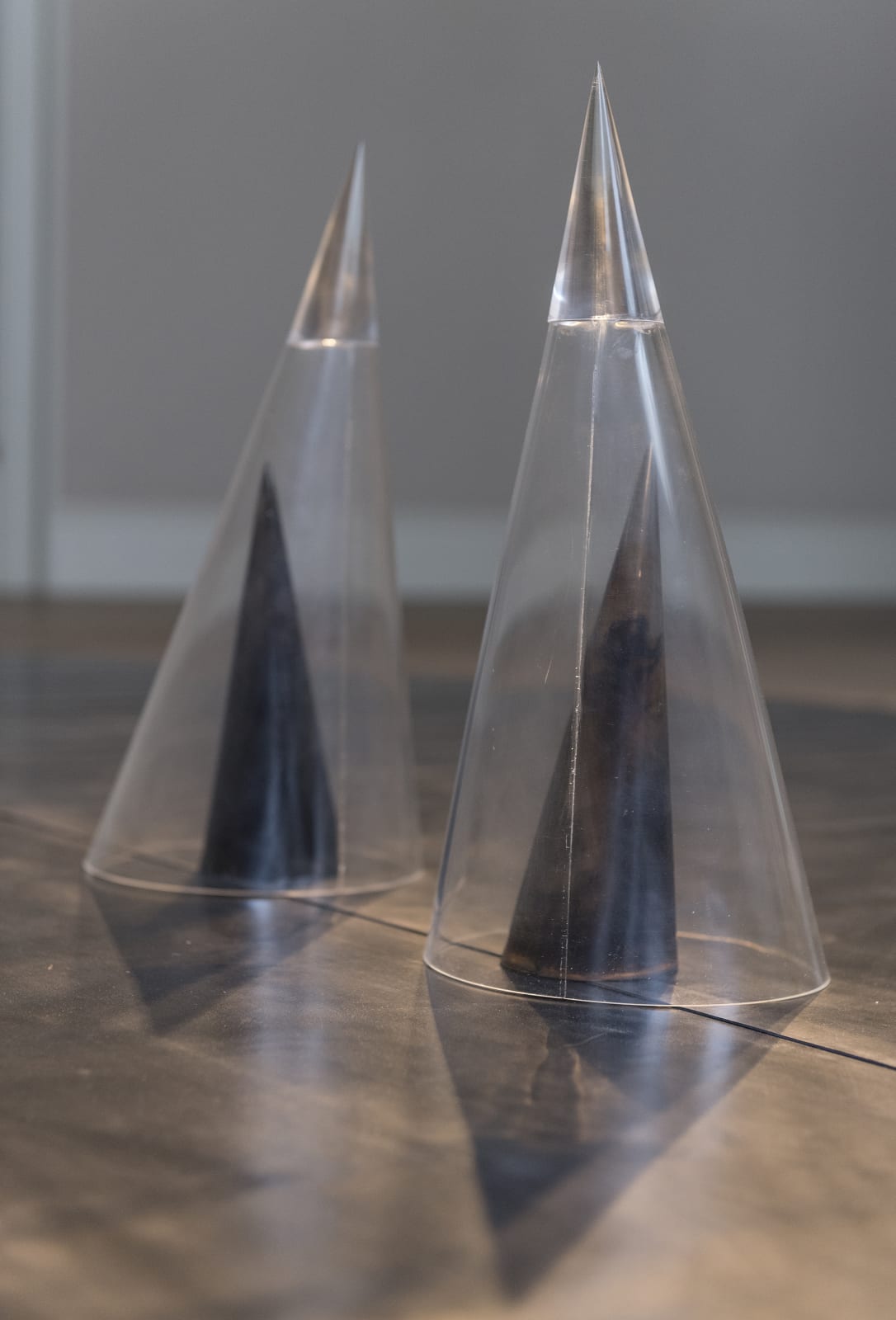Alison Wilding b. 1948
Surge, 1995
Neoprene, perspex and cast resin
133 7/8 x 99 1/4 x 15 in
340 x 252 x 38 cm
340 x 252 x 38 cm
AW 158
Further images
Surge, 1995, relates to a number of early sculptures by Alison Wilding which combine a pliable, fabric-like element (rubber, cloth, paper) with something harder or reflective, see for example Dark...
Surge, 1995, relates to a number of early sculptures by Alison Wilding which combine a pliable, fabric-like element (rubber, cloth, paper) with something harder or reflective, see for example Dark Horse 1, 1983 (Portland roach and neoprene) and All Night Through, 1986 (loaded steel, brass and rubber).
As with Surge, many of the titles of Wilding's early works make explicit reference to water: Well, 1985, Immersion, 1988, Deep Water, 1989, Stain, 1991 and Harbour, 1994-6 (Tate Gallery collection). Here the pool-like rubber ground acts as a protective barrier, keeping us from approaching the the perspex elements which stand upon it. Two solid resin cones are, in turn, contained within larger, transparent perspex cones, creating a further barrier between the viewer and the sharp objects within. Like many of Wilding's sculptures which employ transparent and reflective materials - see for example Assembly, 1991, (Tate Gallery collection) and Shimmy, 2014 (Crown Estate collection) - sunlight naturally animates the work; the colours of the interior objects are revealed as they catch the light, while at other times they can appear black. This work also has a perhaps unintended olfactory aspect as, after more than twenty years, the neoprene retains a strong and distinctive smell.
In the exhibition catalogue, Sarah Whitfield, asks Wilding if concealment and in turn silence are an integral part of her work, in her answer she cites Surge as an example of where she feels she is 'deliberately gagging the work'. She acknowledges the layers and visual obstructions of Surge are a conscious device... 'Making things difficult or slow to apprehend would seem to be a common and slightly perverse trait in my work'.
As with Surge, many of the titles of Wilding's early works make explicit reference to water: Well, 1985, Immersion, 1988, Deep Water, 1989, Stain, 1991 and Harbour, 1994-6 (Tate Gallery collection). Here the pool-like rubber ground acts as a protective barrier, keeping us from approaching the the perspex elements which stand upon it. Two solid resin cones are, in turn, contained within larger, transparent perspex cones, creating a further barrier between the viewer and the sharp objects within. Like many of Wilding's sculptures which employ transparent and reflective materials - see for example Assembly, 1991, (Tate Gallery collection) and Shimmy, 2014 (Crown Estate collection) - sunlight naturally animates the work; the colours of the interior objects are revealed as they catch the light, while at other times they can appear black. This work also has a perhaps unintended olfactory aspect as, after more than twenty years, the neoprene retains a strong and distinctive smell.
In the exhibition catalogue, Sarah Whitfield, asks Wilding if concealment and in turn silence are an integral part of her work, in her answer she cites Surge as an example of where she feels she is 'deliberately gagging the work'. She acknowledges the layers and visual obstructions of Surge are a conscious device... 'Making things difficult or slow to apprehend would seem to be a common and slightly perverse trait in my work'.





